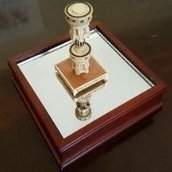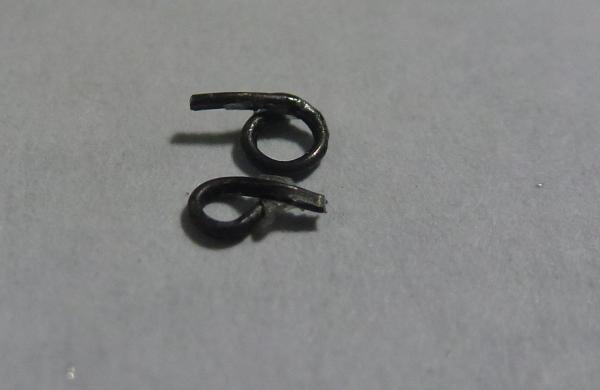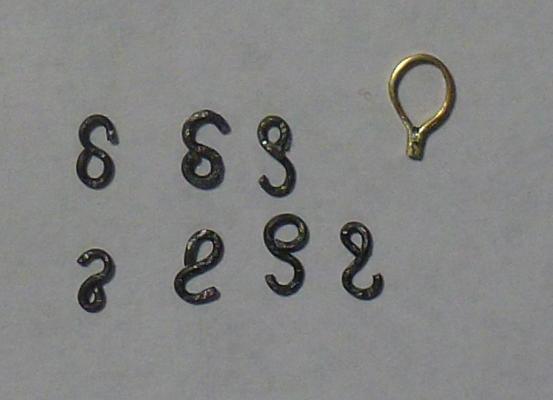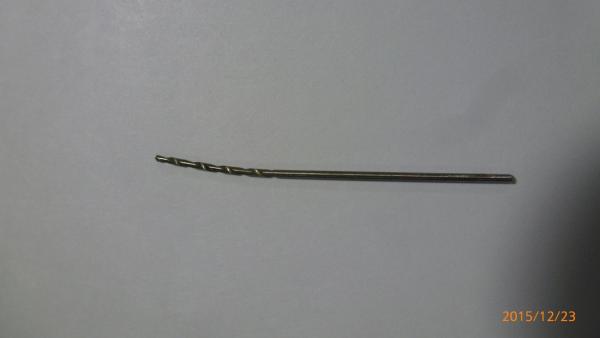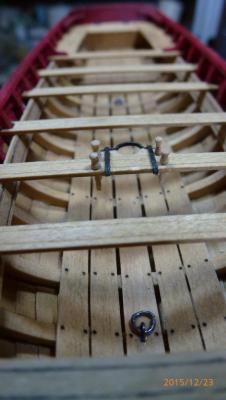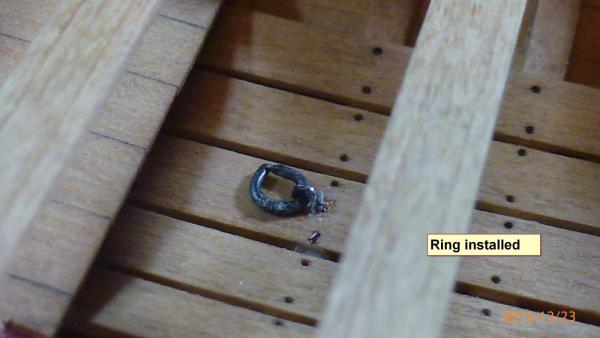-
Posts
5,441 -
Joined
-
Last visited
Content Type
Profiles
Forums
Gallery
Events
Everything posted by Nirvana
-
GentleGiant, Use medium CA (15-25 sec.) to glue the cleats to wood. This will give you the best result, when it comes to CA glue "Less is More", an activator helps to strengthen and shorten the time. In general you when gluing metal to metal/wood/plastic or in any combination, CA is the best applicator. Good luck
-
The symbol Ø represent the drill bit diameter for making the hole. If part 46 and 47 are to installed then yes, those should be installed, use part 47 to line up the holes. Guessing part 46 is the rudder stock. Drill that hole in sequences starting with smaller drills going up to 6mm. Your Bounty is coming along nicely.
-
Pat, The Endeavour is beautiful...... and then the rigging is another chapter itself! I just realized I am missing a book in my library, a book shown in the second to last picture for the moment. Anatomy of the Ship - Endeavour Btw, how's the summer?
- 517 replies
-
- Endeavour
- Artesania Latina
-
(and 1 more)
Tagged with:
-
Erik, Nice finish! Having Chuck around is an amazing help! What is now waiting to be touched and built by your hands and fingers? Happy Ending of this year!
- 222 replies
-
- 18th century longboat
- model shipways
-
(and 2 more)
Tagged with:
-
Creating the downhaul ring for the boom was harder than I anticipated. The first one (top) came out to large The second one (bottom) to much CA, which is revealed in the picture but not with the naked eye...... go figure... And the bottom one is not in the shape of a circle. However this is the one I am going with.
- 335 replies
-
- 18th century longboat
- Finished
-
(and 1 more)
Tagged with:
-
As Mark mentioned, so far the little group of society for finding the cure of Shipaholism are struggling........ The client and test group is to small to get accurate readings out from the trials. I am fully aware about the bookaholism, toolaholism situation...... still of today, it is an small but expanding group. But, once there... we are looking at the Nobel Price! As for the Endeavour, looking sharp! Keep us posted!
-
Jud, I still have the drill, maybe I will try it someday.
-
But your longboat is coming just beautifully!
- 100 replies
-
- model shipways
- 18th century longboat
-
(and 1 more)
Tagged with:
-
I know the Gremlins are still around....... wreaking havoc when it comes to parts...... Ne er finding the i ems you are looking for. Hey, they are ev n taking away letters. Mike, I bought deadeyes from Chuck, very nice once that I am to use. So I have extra, just in case of the Gremlins.
- 100 replies
-
- model shipways
- 18th century longboat
-
(and 1 more)
Tagged with:
-
Mike, Many thanks for the looping plier idea, I have looked them up and seems to be a Very good investment. Thanks again
- 335 replies
-
- 18th century longboat
- Finished
-
(and 1 more)
Tagged with:
-
Bluenose2, I think it will be much much cheaper to dispose the drill and get another one than having it re-shaped. Think I could some 20+ drills for some the shop price, or even more...
-
I thought in order to bend a bit like this you need some heat..... maybe a carpet is good enough... The length: oh sorry, total length only 2 3/4 inches ( about 6.2 cm) long. Could have been stepped on, never felt it though......
-
Well, my home made hooks didn't come out uniformed. Funny though they are all the same length. Seven hooks and the mast ring. It was a long time since I did some soldering, but the butan powered soldering pistol it worked out fine. Think the heat was greater than with an electric. The ring has been drilled for the boom-hook.
- 335 replies
-
- 18th century longboat
- Finished
-
(and 1 more)
Tagged with:
-
So I had done drilling and lost a one of the HSS drill bits in carpet, when I found it it looked like this. Most of my bits going of like this has been broken. Take a look and ponder about it.
-
- 335 replies
-
- 18th century longboat
- Finished
-
(and 1 more)
Tagged with:
-
The "lift rings" were hard to get round, so I settled with the second best. Now both of them are in place and not glued to the boat. They are movable.
- 335 replies
-
- 18th century longboat
- Finished
-
(and 1 more)
Tagged with:
-
Found a casket, seems to be filled with some liquid..... Smells good from it though..... well better sit down on it instead of trying to open it. Looking forward to next step.
- 203 replies
-
- artesania latina
- marie jeanne
-
(and 1 more)
Tagged with:
-
Jack, I just finalized reading through your build log, and got goose-bumps when seeing your transom part. It was like deja-vu. Back in the 70's when I built Marie-Jeanne, I was all alone on the project, And no support but that part gave me a lot of thinking. I probably re-did that part 4 - 5 times. Still it didn't turn out perfect. Besides today with internet it is so much easier to get help if stuck. Good job.
- 203 replies
-
- artesania latina
- marie jeanne
-
(and 1 more)
Tagged with:
-
Hamilton, I looked at Amazon and found the Proxxon was a little higher rated in reviews than the Makita. However, it was based on very few reviews as well. Try to find local hardware stores carrying them to compare. Also, check out this website for more info. http://scrollsawreviews.com/ Don't know if it will help but at least something more to go on.
About us
Modelshipworld - Advancing Ship Modeling through Research
SSL Secured
Your security is important for us so this Website is SSL-Secured
NRG Mailing Address
Nautical Research Guild
237 South Lincoln Street
Westmont IL, 60559-1917
Model Ship World ® and the MSW logo are Registered Trademarks, and belong to the Nautical Research Guild (United States Patent and Trademark Office: No. 6,929,264 & No. 6,929,274, registered Dec. 20, 2022)
Helpful Links
About the NRG
If you enjoy building ship models that are historically accurate as well as beautiful, then The Nautical Research Guild (NRG) is just right for you.
The Guild is a non-profit educational organization whose mission is to “Advance Ship Modeling Through Research”. We provide support to our members in their efforts to raise the quality of their model ships.
The Nautical Research Guild has published our world-renowned quarterly magazine, The Nautical Research Journal, since 1955. The pages of the Journal are full of articles by accomplished ship modelers who show you how they create those exquisite details on their models, and by maritime historians who show you the correct details to build. The Journal is available in both print and digital editions. Go to the NRG web site (www.thenrg.org) to download a complimentary digital copy of the Journal. The NRG also publishes plan sets, books and compilations of back issues of the Journal and the former Ships in Scale and Model Ship Builder magazines.


